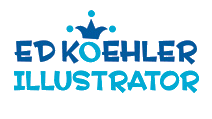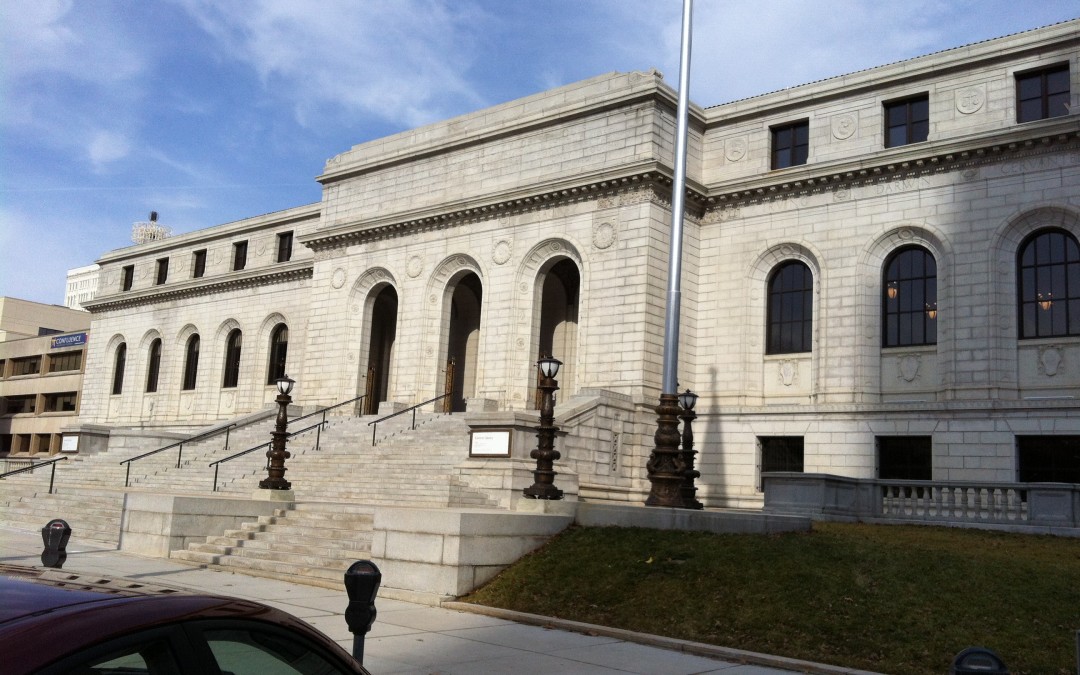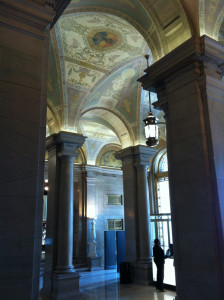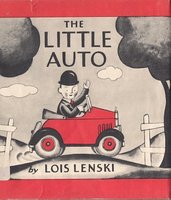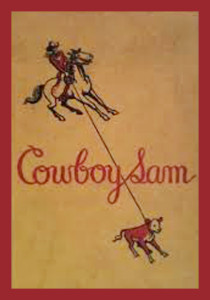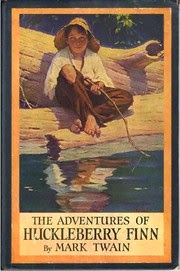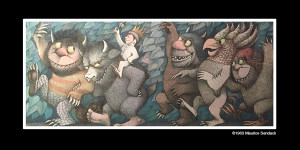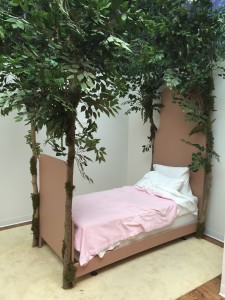The St. Louis Public Library
We have seventeen library branches throughout our city. There are twenty more in the St. Louis County Library system, which is separate from the city, but part of the metro area.
Pictured above is the Central Library, a Cass Gilbert Beaux Arts gem funded by Andrew Carnegie. It was extensively renovated in 2012 for its 100th birthday. Located downtown, the building is a work of art, with beautiful rooms, stained glass, architectural moldings, and stenciled walls and ceilings. It’s a wonderful place.
Wonderful as the building is, it’s greatness is that it is a library. A treasure house of printed words and ideas.
Stories
This morning, Judy and I talked about the earliest books we remember. She recalls The Borrowers by Mary Norton and The Little Princess by Frances Hodgson Burnett. I remembered The Little Auto by Lois Lenski and the Cowboy Sam series. Cowboy Sam books were probably written by a number of folks, as the covers shows no famous author.
I can’t say I remember much about The Little Auto but I’m pretty sure this image shows the edition that I read. I guess Mr. Small (the driver) drove around taking in the sights and relaying his adventures to me.
Cowboy Sam did regular stuff like rope cattle, cook pancakes on a griddle, and round up rustlers.
The artwork in these books were very old-school, but they had a great graphic sensibility. I think my eyes were drawn to the sketchy black lines spotted with red. That’s what we call a two color job. Cowboy Sam was ordinary commercial illustration. Competently drawn, but didn’t break new ground.
The Little Auto artwork is more interesting to me. That strange little car, whimsically rounded trees, and the quirky Mr. Small donning his derby for a Sunday drive.
Back to libraries. My Kindergarten and first grade school didn’t have a library. We had a bi-weekly visit from the Bookmobile, a rolling library. I thought it was great and always enjoyed stocking up on more Cowboy Sam.
This may sound like I’ve always been an avid reader. Maybe not. I was probably more into the pictures. At some point my mom got word that I was lagging behind. She made this known to my Uncle Earl in Omaha (sounds like a book series : The Adventures of Uncle Earl In Omaha) and the next thing I knew I received a box of books from Nebraska. Uncle Earl and Aunt Bettye were like that.
Meaning
Among the volumes within the box were two books that bucked Cowboy Sam out of his saddle and flattened The Little Autos tires for good. Tom Sawyer and The Adventures of Huckleberry Finn.
This was a turning point for me. Twain was funny, gripping, and kept me interested. I re-read Huckleberry Finn in a high school. By then I was more than interested in a good yarn. I was tuned into the subtle way words can convey truth.
You probably know the story. Huck, floated down the Mississippi on a raft with escaped slave Jim. Huck feels pangs of conscience over his part in Jim’s escape. His guilt increased as he realized he was aiding and abetting a crime; Huck harbored “stolen property”. Bounty hunters were are in the area, and Huck had a chance to redeem himself by turning Jim back to his rightful owner.
After a considerable internal wrestling, Huck, who had grown to love and admire Jim, threw all to the wind and announced under his breath, “All right, I’ll go to Hell!”. He did not turn Jim in to the bounty hunters, and thus surmised that neglect to do “what was right” forfeited redemption.
That’s powerful stuff.
I’m captivated by powerful words. Ideas matter. Words have meaning.
There is much written these days that words don’t have absolute meaning, but only advance a narrative useful for grabbing power. The people who write about the deficiency of language to convey absolute truth oddly want us to consider their words on this subject as absolutely true.
Libraries house many words that express many conflicting ideas about meaning. That’s not a problem for the library. Their job isn’t to adjudicate truth claims, but to make them available. Librarians are the opposite of book burners.
Imagination
Let me switch gears and go back to childhood books. The Central Library is currently hosting an exhibit of the original Maurice Sendak art used for Where the Wild Things Are. I was young when this book came out (1963), but I didn’t see it until I was an adult. Probably like many of you, I’m captivated by its lush art and simple childhood imaginings. Mischief maker Max is confined to his room which grows into a far away island inhabited by wild things.
For this exhibit our library has rebuilt some of the settings: Max’s bedroom, his boat, the table where his hot meal would finally appear.
Most adults I know resonate with this wonderful reminder that plain rooms can become places of mystery, wonder, danger and safety. The Sendak art is as fresh and exquisite now as it was 52 years ago. His work makes me thrilled I’m part of this field.
During our morning conversation, Judy shared that a counselor friend of ours was working with troubled kids at a charter school. A recent project involved Play Dough “baking” intended to nurture cooperation and light their imagination. She relayed how sadly deficient many of these kids were at make-believe. Lack of reading in their homes, along with minimal child play, had left them confused about the idea of mindful creativity.
As I walked through the exhibit I was encouraged to see many kids with many parents from many cultural backgrounds taking in the art, the story, and the wildness of believing that in a dangerous and rebellious land we need the unconditional grace of a prepared table.
Max the mischief maker was loved unconditionally by the meal maker, the true parent who loved him and always would.
Share some of your favorite stories and libraries, and tell me what you like about them. Perhaps your city has a great library I should check out. Thanks for reading.
